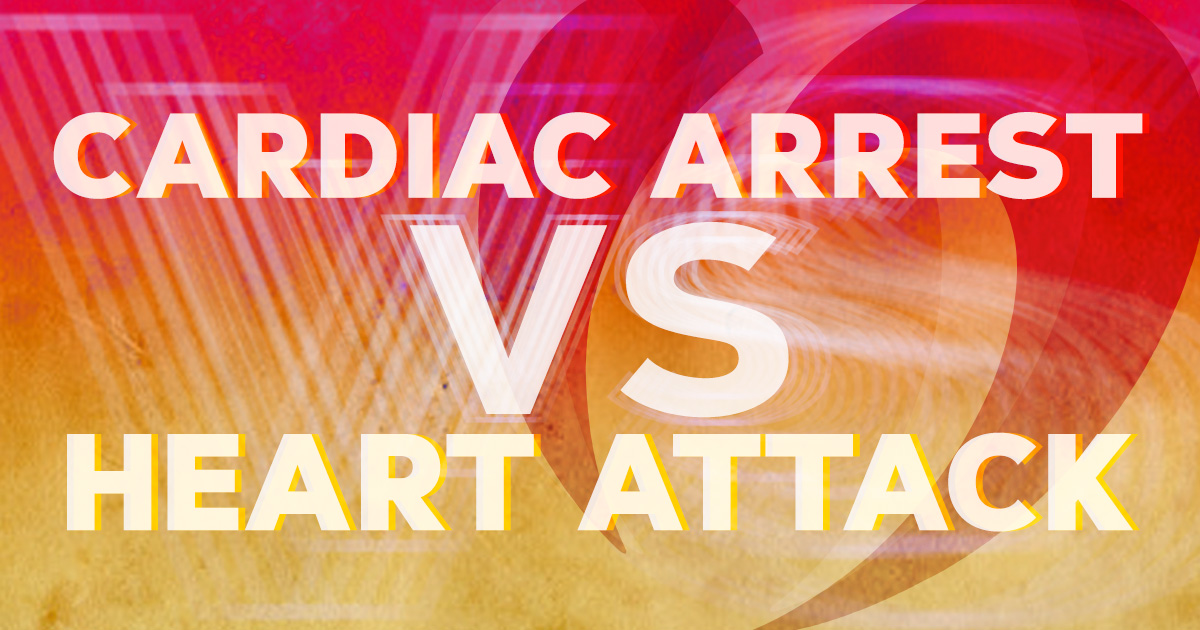What is Cardiac Arrest? How is it Different From a Heart Attack?

While heart attacks (myocardial infarction) and cardiac arrest sometimes go hand-in-hand, they are two distinctly different events in the heart. A heart attack is damage to the heart tissue due to a loss of blood flow to the heart. During cardiac arrest, the heart stops beating suddenly. Chances of surviving cardiac arrest are much lower — fewer than 1 in 10 people survive to leave the hospital after cardiac arrest, compared to 9 in 10 people surviving a heart attack.
The heart has an electrical system that keeps it beating regularly. Cardiac arrest occurs when something causes the normal system to quit working. One of the most common causes of cardiac arrest is ventricular fibrillation, where the lower chambers of the heart twitch but don’t pump any blood. When the heart stops pumping, blood flow stops completely so that there is no pulse and no oxygen-rich blood flowing to the body. Sometimes, the reduced blood flow that causes a heart attack may in turn cause ventricular fibrillation, which then leads to cardiac arrest. However, it is possible to have a heart attack without cardiac arrest and cardiac arrest independent of a heart attack.
Unlike a heart attack, which often has some early warning signs, cardiac arrest happens suddenly and results in the individual passing out due to complete loss of blood flow. Immediate medical treatment is required through CPR (cardiopulmonary resuscitation) to keep blood pumping or the use of a defibrillator to restore the regular heart rhythm.
Some individuals are at higher risk of cardiac arrest, including those who have ischemic heart disease (also known as coronary artery disease) or a previous heart attack (myocardial infarction). Other risk factors for cardiac arrest include abnormal structure of the heart, cardiomyopathy, congenital heart disease, or valvular heart disease. Less common causes include trauma, infection or inflammation of the heart, or dissection of the aorta.
At Oklahoma Heart Hospital’s Heart Rhythm Institute, electrophysiologists assess each patient’s risk for cardiac arrest and try to reduce that risk over time. The most effective prevention step is to correct any underlying issues, such as structural heart disease or valve disorders, to support normal blood flow to the heart. For some patients, their risk factors may warrant placement of a defibrillator to shock the heart and restore normal rhythm if the heart stops suddenly.
If you have any risk factors for cardiac arrest, contact the Oklahoma Heart Hospital today to schedule an appointment.
